#taxonomy is weird
Explore tagged Tumblr posts
Text
Apparently buckwheat isn't a cereal. Isn't a grass. Isn't even close to grass. Is in the same general ballpark as carnations, cacti, and beets. Wut.
#taxonomy is weird#why are carnations cacti and beets even in the same ballpark#what do these plants have in common?#if it's beet land is it also like...kale land? cruciferous vegetable land?#so many questions
19 notes
·
View notes
Note
Kink Taxonomy hell, I'm here to rep foot appreciation. Nobody ever treats it as anything but a joke, but your feet are one of the most sensitive parts of your body. Who doesn't want their feet massaged and caressed and appreciated? Why is it always "lol foot fetish gross" instead of recognizing the potential?
of all the fetishes that keep showing up in my porn uninvited, feet are probably the least offensive tbqh and people have gotten really weird about it
#original#kink taxonomy hell#accusations of foot fetishism abound and suddenly i'm supposed to feel weird about foot massages
655 notes
·
View notes
Text
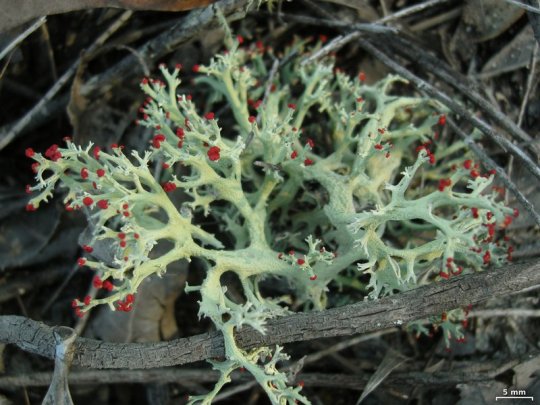

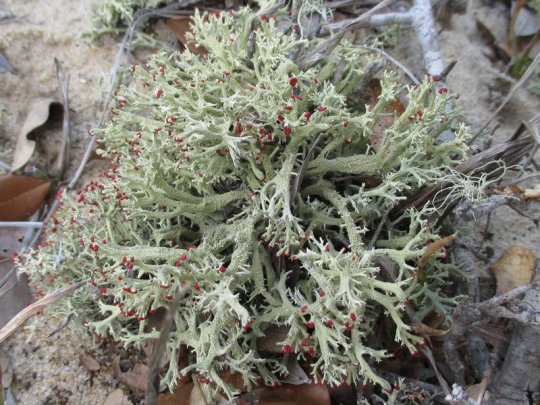
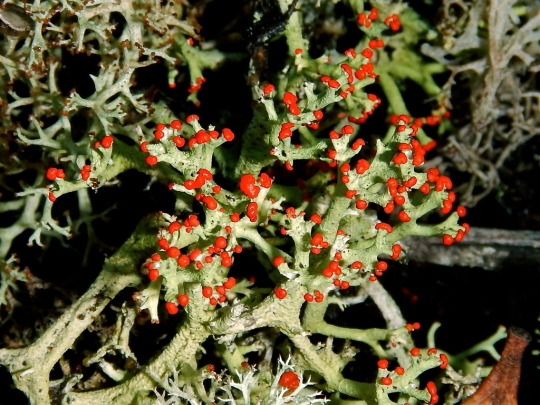


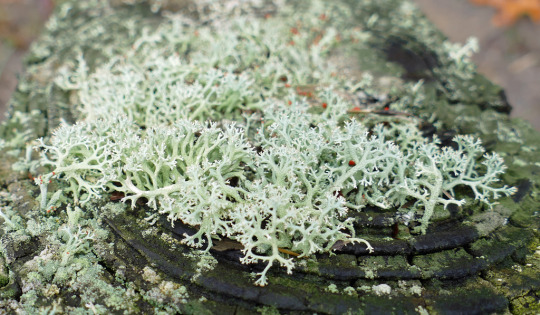


Cladonia leporina
Jester lichen
Currently yelling at my colleague about how ridiculous it is that for most of my life, I didn't *see* Cladonias, or most lichens for that matter. I, who spent so much time outside and considered myself a real student of nature never noticed them. Seriously, how was I just overlooking things like this in the world? The mind boggles. C. leporina has a fruticose thallus of widely spreading branches growing is cushions up to 5 cm tall and 10 cm wide. It is greenish-yellow in color, with a smooth, corticate (bark-like) surface. It produces bright red apothecia from the branch tips. C. leporina grows on sandy soil and wood in the southeastern USA and Caribbean islands. I understand Elton John when I look at this little guy, because honestly, how wonderful life truly is, while Cladonia's in the world.
images: source | source
info: source | source
#lichen#lichenology#lichens#lichenologist#ecology#mycology#biology#botany#bryology#systematics#taxonomy#symbiosis#symbiotic organisms#algae#Cladonia#Cladonia leporina#Jester lichen#life science#environmental science#natural science#the natural world#beautiful nature#weird nature#go outside#take a hike#look for lichens#lichens are so good#lichen a day#daily lichen post#lichen subscribe
527 notes
·
View notes
Text
In place of groundless "stereotypes" that posited continuities between homosexuality, vice, and deviance, a more scientific understanding could construct these associations not just as politically harmful but as objectively incorrect—as taxonomic errors. DSM reformers thus embarked on a larger epistemic project that sought to alleviate social stigma by reinvigorating sexuality as an object of science. Thus, reformers did not so much have to argue that psychiatrists alter their values, just that they better adhere to their own research standards.
In accordance with these efforts to produce more taxonomically precise sexual knowledges, "homosexuality per se" became an especially widely used turn of phrase amongst gay activists and allied professionals. This designation sought to circumscribe understandings of homosexuality, stripping it of wrongful associations with behavioral and personality types that were peripheral to same-sex object choice. By disarticulating homosexuality "per se" from gender nonconformity, for instance, activists could construe more damning images of homosexual gender variance as a simple confusion of diagnostic categories.
Similarly, responding to popular associations of homosexuality with transsexuality, Gold emphasized in a 1973 speech that being gay involved no uncertainty about one's gender or body and that he knew of "very few gay men who are... 'frightened' of their genitals." Gold even suggested that existing cases of gay effeminacy could be attributed to the emasculating effects of stigma and that gay men might be able to better achieve normative gender roles if they were afforded greater social acceptance.
In this view, correcting the nosology of homosexuality might actually help treat the symptoms of transvestism. By emphasizing that atypical gender expression had no intrinsic relation—or even correlation—to sexual object choice, the depathologization of homosexuality was secured through a repsychiatrization of gender nonconformity.
“We Are Certain of Our Own Insanity”: Antipsychiatry and the Gay Liberation Movement, 1968–1980, Abram J Lewis
#antipsych#sexuality#this is really good tbh. on sexuality + psych taxonomy#now the wind now a voice it carries#weird segue into radical feminist writers like solanas later
15 notes
·
View notes
Note
top five BUGS
oo thats hard uhh . some of these are more general & some are more specific
pill millipedes
drugstore beetle
locusts
fireflies (mostly because i feel lucky i live in a place that has them)
treehoppers
most of these are pretty general since theres so many bugs its hard to pick very specific favourites, but for some reason i like the drugstore beetle in particular,, it looks nice :)
9 notes
·
View notes
Text
Donovan’s Tryptich
It’s one of those blissfully rare days where the breeze drifting off the lake tricks you into thinking the humidity is actually bearable. You’ve opened the window in your living room, holding your breath as Donnie’s precariously-installed hack job of a box fan threatens to teeter over the edge, and you’re rewarded with the low drone of gentle wind across your skin as you melt into the couch. It hasn’t been a terrible day, but it’s certainly been long; you spent hours running around putting out fires at work (which you secretly love), and when you weren’t assuaging the office’s collective neurosis you were feverishly trying to get your two thousand words in before the deadline. Your editor, as always, was impressed, and sure, maybe the word “promotion” has been thrown around here and there, but it was really nothing. All in a day’s work.
The train was crowded, so you got off one stop early and walked home. You can still feel the sun emanating from you; you can almost smell its heat on your skin. Now, wonderfully horizontal with a book in your hand (VC Andrews, you can’t resist), all you have to do is wait for your boyfriend to make his way back to the apartment. Today’s was a day game against the Brewers. Donnie loves day games because they’re the only time your schedules actually match up–he can put in a full day’s work and make it home in time for dinner.
As if on cue, Donnie’s sunshine voice sounds from the entryway. “Honey, I’m home!” he calls; the two of you never really call each other “honey,” but it’s his habit. You never totally got it until you spent a weekend with his parents in the suburbs and realized that his dad does it every time he enters the house.
“In here,” you reply, lying the book face-down on your chest. When you got home, you immediately changed into comfortable denim shorts and one of Donnie’s old T-shirts. You’d be lying if you said it wasn’t mostly to get a reaction out of him–he melts when you wear his clothes.
You hear a telltale thud–Donnie’s dropped his work bag unceremoniously on the floor–and seconds later your boyfriend rounds the corner with that signature goofy grin plastered across his face. He crosses the room toward you, all long limbs, and lowers his body indiscriminately on top of yours. You laugh as he briefly crushes you beneath him, basking in the shared afterglow of the sun on both of your skin. After a moment, the spine of your book digging into his sternum, he raises himself up on one arm. “What’s this–My Sweet Audrina?” he asks, delicately lifting the book out of the way so as not to lose your place.
“Mm-hmm. It was my favorite when I was, like, thirteen,” you say, “you’d hate it.”
He hums in response, his focus shifting to your–his–T-shirt. It’s an old gray thing with “Loyola Track & Field” emblazoned across the front, a relic of his oldest sister’s college days. Donnie–slowly, gently–hooks one long finger beneath the collar, barely grazing your throat. “Are you trying to kill me?” he asks, his voice low, never losing that boyish smile. You shrug coyly and he gives a small, breathy laugh before dropping his lips to your neck, your jaw–and then he stops. In spite of yourself, you let out a quiet whine, and Donnie laughs again. “I have a proposal for you,” he says, “you ready?”
You sigh dramatically. “Okay. But you have to get off me, I can’t breathe.”
Now it’s Donnie’s turn to sigh, but he rolls off the couch, leaving you free to sit up. Once the two of you are comfortably situated–you cross-legged against the armrest, him facing you with one leg tucked underneath the other–he clears his throat as if to quiet a congregation. “Okay, so here’s the deal,” he says, “I love you more and more every single day.” He says this like it’s a known fact, like he’s telling you the sun rises in the East. You swallow the strangled noise that rises in your throat, having learned long ago not to question the depth of the man’s devotion. “And when I leave for a week or, god forbid, two weeks at a time, it blows,” he continues.
“Blows in a major way,” you agree sagely, trying hard not to smile–he’s taking this extremely seriously for someone who just used the word “blows” in civilized conversation.
“Right, exactly. And you come with me sometimes, and it’s great, but we barely see each other.” He looks at you expectantly then, like you should know where he’s going with this, but all you can do is nod. It’s true–you love accompanying him on work trips, but by the time he finishes photographing each game and makes his way back to your shared hotel room you’re often well on your way to a good night’s sleep. Seemingly satisfied, Donnie continues: “So I was thinking. You’re coming with me to Baltimore in a few weeks, so what if we took off a few days early and turned it into a road trip? I mean, a lot of it would just be Indiana, but still,” he pauses, almost nervous, before continuing. “It’s been a long time since I got to spend a whole forty-eight hours with my girl.”
This is not strictly true; it’s early enough in the season that the last time the two of you spent a whole weekend together couldn’t have been more than a month or two ago–which now, thinking about it, actually does seem like an unbearably long time. A smile slowly spreads across your face, and you see it mirrored in Donnie’s as you reply. “Okay,” you say, “sure. I’ll get the time off work.” You might have to squeeze some writing in here and there depending on your deadlines for the coming weeks, but you’re pretty sure you can make it work. It’ll be worth it just for the look on his face right now.
“Yeah?” Donnie asks, barely-restrained excitement evident in his smile lines.
“Yeah,” you reply. The word has barely crossed your lips, and he’s grabbed your ankle, tugging you gently to a prone position on the couch. For all of his speed and intensity, you’re always amazed at the delicacy with which he handles your body. In the blink of an eye, he’s on top of you again, suspended above you and kissing every inch of you that he can reach while you laugh beneath him.
—
Indiana is so, so much bigger than anyone gives it credit for. Or maybe it just feels that way when you’re driving through it–I mean honestly, does anyone live there or is the whole state just one big cornfield? You thought you’d died and gone to heaven when, at long last, you crossed the border out of that fine state.
You’re somewhere in the part of Kentucky that cradles Ohio, and things are beginning to look blessedly green again. You’re not sure exactly which town you’re passing through, but it’s adorable. The houses are adorned with big, beautiful front yards, rows and rows of flowers and vegetable gardens laid out neatly on the edges of perfectly manicured lawns. It’s a little Edward Scissorhands for your tastes, but you can appreciate the beauty of it for what it is.
There seems to be some kind of farmer’s market happening, if the signs tacked to the town’s fences and light posts are to be believed–RHUBARB FESTIVAL, they read, each charmingly hand-painted and decorated with red stems. You smile to yourself as you pass what must be ten of them in a row staked to flower beds along the main street. Your hometown had something similar in the summer, and it’s almost enough to make you nostalgic. Almost.
At a stoplight, you glance to your right to find Donnie looking contemplative. No, not contemplative–confused. Perplexed. Preoccupied. He’s been oddly silent since you entered the town, and you wonder for a moment if he knows something you don’t. Maybe you’re lost. You’ve been following the map pretty faithfully, you think, but Donnie’s always been better with directions. He has a weird sixth sense for these things, like growing up in the dystopian traffic hellscape of downtown Chicago has enabled him to navigate any route with ease.
“What’s up?” you ask as the light turns green. The car accelerates gently and you drive for a few moments before he finally replies.
“Who the hell is R. Hubarb?” Donnie asks.
“R. Hubarb?” you reply, confused.
“Yeah, R. Hubarb. The guy on all the signs? I wonder if he’s the mayor or something,” He gestures vaguely beyond the dashboard, where another RHUBARB FESTIVAL banner hangs brightly from a patio fence.
You glance over at him, schooling your face into neutrality with significant difficulty when you realize he’s being completely serious. “Baby,” you say–you break, unable to keep yourself from laughing– “do you mean rhubarb?”
“Rhubarb?” your boyfriend asks, rolling the word around on his tongue like it’s the first time he’s heard of such a thing. Then, all at once, it dawns on him. “Oh my god,” he says, “rhubarb. Like rhubarb pie. Oh my god, I’m such a dumbass.”
You really crack up now. Maybe it’s the heat, or the fact that you’ve spent so many hours in the car, but “R. Hubarb” might actually be the funniest thing you’ve ever heard in your life. Your laughter quickly becomes untenable, your eyes genuinely tearing up. Trying in vain to tame the fit with deep breaths, you throw on your right-hand turn signal and pull over into the first available parking space along the main street, where you proceed to rest your head against the steering wheel, gripping it like your life depends on it. Your cheeks hurt from smiling, and the laughter racks your whole body.
“Oh come on, it wasn’t that damn funny,” Donnie attempts, though you can hear in his voice that he’s laughing right along with you.
“R. Hubarb,” is all you can manage as you peel yourself off the steering wheel to look at him.
“Jesus, you’re actually crying,” he grins, brushing a thumb across your cheek.
You take a few more deep breaths (though not without lapsing into hysterical laughter once or twice) before you’re finally able to pull off the side of the road. You kiss him once before you do, smiling against his lips. “I love you so much it’s ridiculous,” you say.
“I’m just glad I can still entertain you,” Donnie murmurs good-naturedly before delicately pecking the tip of your nose.
—
The first game of the series ran late. The Orioles made the Cubs work for their win, and Donnie was likewise exhilarated. When you met in your hotel room, he kissed you in a haze and murmured “Dinner?”
In that moment, something devious occurred to you. “Sure,” you said, “you go ahead and get changed, I’ll run down to the lobby and grab us a table.”
Donnie either didn’t clock that this was unusual or he was too distracted with the Cubs’ continuing hot streak to care, which led you to this moment. A little conspiracy with the waiter, an extra $10 for the effort, and voila–it was the perfect setup.
You’ve been patient all throughout dinner, surreptitiously winking at the waiter when he cleared the last of your plates, and it’s truly taking everything in your power not to burst out in laughter right at this moment. It’ll be worth it, you tell yourself, this little prank you’ve concocted. You’ve literally never once successfully pulled one over on Donnie. He takes one look at you and just knows, but not this time. This time you have the upper hand.
Your absolute champ of a waiter makes quick work of your scenario. He sets the bill in the center of the table at the same moment that he slides a beautifully-plated piece of pie–triple berry because they didn’t have rhubarb, whatever–squarely in front of Donnie.
“Compliments of Mayor Ron Hubarb,” he mutters conspiratorially to your boyfriend, whose eyes blow wide as he trains them directly on your face.
Donnie’s fit of laughter is barely restrained as he thanks the waiter, his gaze never leaving yours. As soon as the man is gone, the two of you dissolve into the gauzy, champagne-light fog of delirium, laughing with abandon so that Donnie can barely manage the billfold in his hands as he shakily attempts to settle the bill on the table.
“I’m never living this down,” he says through a grin. It’s not a lament, just a statement of fact, and you shake your head in agreement.
“Not a chance,” you say through your own triumphant smile, “we’ll be eighty and living in a retirement home and I’ll be telling all the nurses about my friend R. Hubarb.”
#toady talkin#i will 100% tag this appropriately once I get my taxonomy set up#but yeah enjoy!#i had so much fun writing this#and if you’re like ‘wow that seems kind of specific i wonder how she came up with that’#it was me i said it#i was camping with friends and said this exact thing while driving up to a trailhead#what can i say there’s a little bit of me in all my characters ♥️#feeling something kind of angsty next but I need the right scenario#can’t use the angst in my own love life for inspo unforch that would just make things weird
16 notes
·
View notes
Note
if there was a plant that grew bones and flesh like fruit that you could harvest, would it still count as meat?
na cause it's a plant
#this philosophy shit is easy#im being annoying and jumpkng away from having a philisophical discussion about classification to a practical discussion about what#most people would actually considet a thing to be#it is interesting that by the definitions we set out getting a galbladder out of a person and eating it is both cannibalism and vegetarian#squaring that is actually weird and confusing#i love taxonomys#anyway that's why i tagged this last one and this one “this philosophy shit is easy”
8 notes
·
View notes
Text
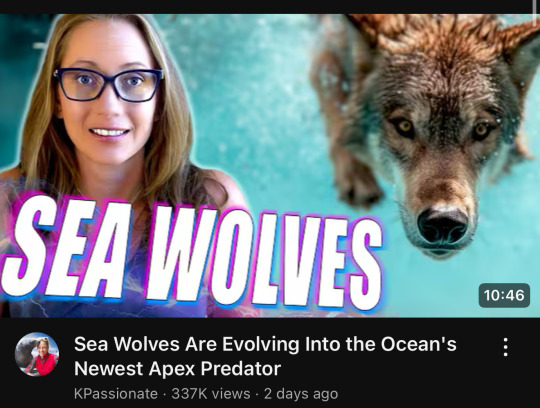
I don’t know how to even describe to you how excited I was when I saw this
#hahahaha#animal evolution / taxonomy is so fucking weird cool to me#that’s why I was a bio major way back when
2 notes
·
View notes
Text
yay selfship reblog game
reblog with a pic of your f/o and ill assign them a caniform!
(caniforms are "dog-like" carnivorans)
(also disclaimer that im not an expert on these)
#anii speaks#selfship game#selfship#self ship#selfshipping#self ship game#reblog game#self shipping#taxonomy#probably a weird thing but i like taxonomic classification ok#also caniforms are my favorite suborder so thats why im doing them
15 notes
·
View notes
Note
One of my friends shared your 'trans women pull themselves up by the boobstraps' post to our group chat and I was like 'oh my god??? My mutual???? Beloved mutual has breached containment????????'
oh my god im a beloved mutual…
#Waow I always forget that I am my cute mutuals’ cute mutual#assembling my team of velumptuous fem woman enjoyers with various ornate disabilities and clown issues#were like the avengers if joss Whedon had done the right thing and killed himself after season 3 of Buffy#and if you’re trans also you can ride in my stretch rickshaw#and if you’re transFEM you get control over the aux and final say over egg vs gnc cis man taxonomy and that’s that#large weird gay cis girls you are welcome but out of courtesy we ask that she/hers bring a spare neopronoun in case of mishaps
2 notes
·
View notes
Text
It's so hilariously American-centric to say that
This (Southern Resident)
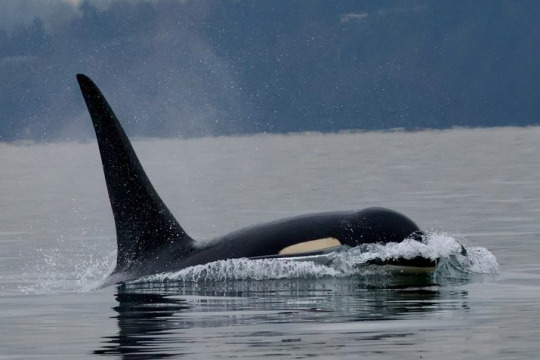
Is a distinct species from this (Transient/Bigg's):
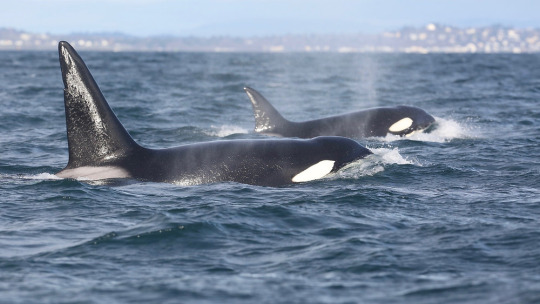
-
But that means that this (Bremer Canyon offshore ecotype)
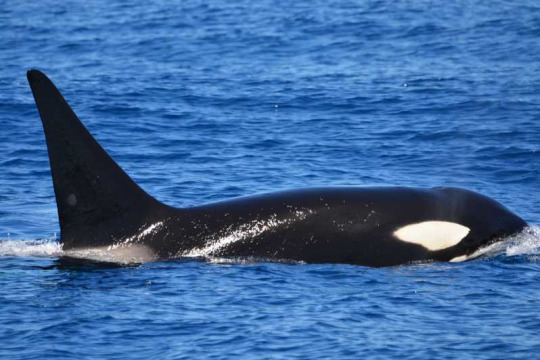
is the same species as this (Type D Antarctic ecotype)

And is also the same species as this (Icelandic ecotype)
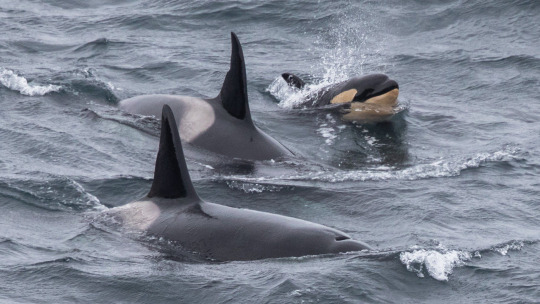
I get we have a lot of data on Residents and Transient/Bigg's but it's going to get real confusing if we start defining killer whale ecotypes as entirely different species - especially if the most distinctly different ecotypes are being ignored.
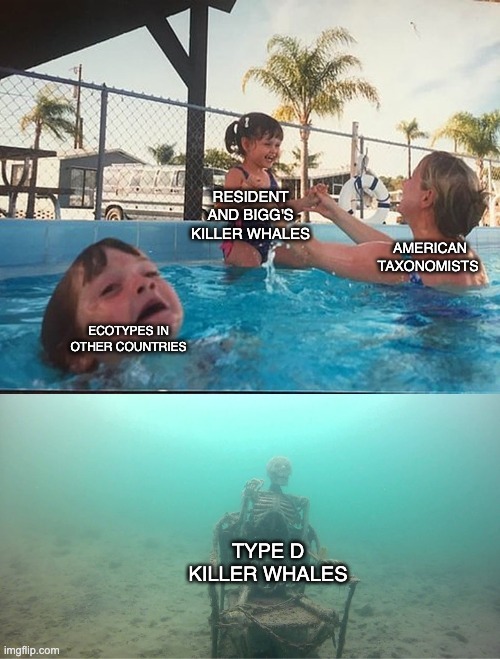
Edit: I am mostly joking here and I get that by defining them as a separate species, they could be considered more for protections like the endangered Southern Residents. However I feel like they will still be referred to as killer whales by the general public, who will be going off visual rather than the other genomic evidence provided in the paper.
It's not a huge drama, really. It's just going to be interesting to see if every ecotype is going to be given its own species classification and how that relates to the conversation about culture transmission and hybridisation in killer whales as well.
#taxonomy is so weird#also I still feel weird about calling them Bigg's - calling animals after the people who discovered them feels colonialist to me#they existed before you discovered them you don't own them#idk people are weird about their killer whales in the Pacific Northwest too#killer whale#orca
12 notes
·
View notes
Note
Hi I'm the person who sent the ask about using weird hypnotism porn as guided mediation. Thank you for the youtube ASMR suggestion I never thought of that because most ASMR triggers just make me uncomfortable but apparently a woman talking in a soothing voice with ambient music in the background and no other sounds also counts as ASMR somehow???
Which is actually great for me specifically but I now have a new problem: learning how to navigate the extremely strange world of youtube ASMR. What is even happening over here. Somewhere there is someone cataloguing ASMR taxonomy hell. Or if there isn't there should be.
listen. i could go the fuck on about asmr taxonomy hell. the whisperers stole 'softly spoken' and i will not stop yelling about it. there is massive overlap between asmr triggers and misophonia triggers so almost no one tags for the latter. literally with a lot of asmr triggers either they hit and you get tingles or they miss and you get viscerally uncomfortable. i feel like you could do really interesting research into that overlap and how it mirrors arousal/disgust.
my first asmr experiences were reading phrenology handbooks so 90% of all asmr videos do not trigger tingles for me at all. 'unintential asmr' and 'unintentional style' are some of the only things i can count on to indicate that there won't be whispering now that softly spoken has fallen. there's a ton of newer creators who don't actually try to trigger tingles, they're just doing horny roleplays. which is fine, more power to them, but it's making it really hard to find cyberpunk hardware inspections or whatever the fuck. i'd give you some recs but i don't know if anyone i'm into would fit what you're looking for aside from some jellybean green stuff.
if someone made some kind of web app or something that could be used as a link database with community tagging, i would use it for porn, but i would actually also use it for asmr videos because i am so tired of misophonia roulette and trying to find the specific type of exam/inspection that will trigger me 😭
#original#asmr taxonomy hell#that can be a tag now. whomst can stop me. no one.#the weirdest part. the weirdest. is that i thought light stuff didn't do it for me. BUT IT TURNS OUT. RED LIGHT SPECIFICALLY. TINGLE CITY.#what's up with that. that's so fucking weird.
77 notes
·
View notes
Text

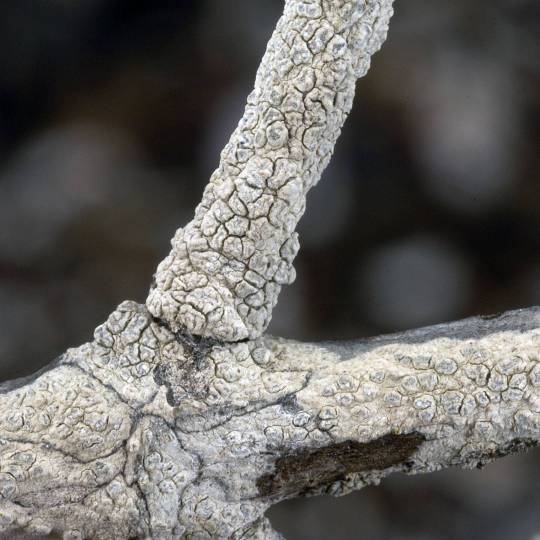



Angiactis spinicola
Did you know that the diversity of the Galapagos also extends to lichens? A. spinicola is one of several lichen species endemic to the Galápagos Islands, where it grows on the twigs and spines of shrubs and trees near the coast. It has a dense, white, crustose thallus covered in lots of wart-like, elongated or irregular apothecia. The apothecia have a pronounced thalline margin and thin black discs obscured by a thick layer of pale pruina. A. spinicola has a Trentepohlioid photobiont. The genus Angiactis was only described in 2008, with only 4 recognized species thus far. 2 of these species are located in Australia, while another is endemic to the Bahamas. With such a disjunct and unique distribution pattern, this genus must have an interesting history. Gets me thinkin, ya know?
images: source | source
info: source | source | source
#lichen#lichens#lichenology#lichenologist#mycology#ecology#biology#fungi#fungus#symbiosis#symbiotic organisms#algae#trypo#trypophobia#Angiactis#Angiactis spinicola#Galápagos Islands#Galápagos#I'm lichen it#lichen a day#daily lichen post#lichen subscribe#beautiful nature#weird nature#natural science#environmental science#life science#taxonomy#systematics#speciation
82 notes
·
View notes
Text
Happy/spooky Friday everyone.
Obviously I'm sad about the long days getting shorter and summer fruit season slowly drawing to a close, but there are compensations. Like PERSIMMONS!!!
(happy it's persimmon season dance.)
Not only are persimmons delicious, but they are also in the order ericales in the...taxonomic category*...asterids, which you can vote for (or against) in the @plant-taxonomy-showdown bonus round semi-finals which will almost certainly start later today! So, keep your eyes peeled!
But your persimmons don't have to be!
*the correlation between traditional linean categories and actually useful categories is a bit hit or miss.
#ericales is a really fun order it's so random#blueberries and brazil nuts and shea butter and tea#sure why wouldn't that all be in one order?#that's not anywhere near other berries (other than cranberries) (either in the culinary sense or in the technical sense)#and not anywhere near coffee#and not anywhere near other orders that have nuts#and not anywhere near other orders that have plant based oils#plant taxonomy is so weird I love it so much#blueberries and cranberries are in the same genus so they're like siblings
2 notes
·
View notes
Text
ae had no idea how many birds were passeriformes until now. turns out it's...most of them probably
#we're not very good at taxonomy at all#just because it's so much to remember and there's so many layers and there's so many aghhhhhh#so we don't tend to pay attention to stuff like that#we knew that corvids were passeriformes but we didn't know orioles and tanagers were too#we knew that owls were strigiformes but they're also the only ones that are strigiformes#don't ask about anything else cause we don't know#wait no we've got one more. rabbits are lagomorphs. we know that. cause it's weird why are they called that#the fuck is a lagomorph. a rabbit apparently. and pikas#is. is carnivora an order#oh. it is#ae'm confused. taxonomy time over#now you know a fun fact about us
4 notes
·
View notes
Text
I swear all phylogeny looks like this:

3 notes
·
View notes